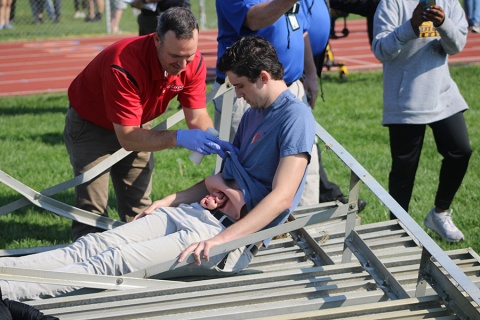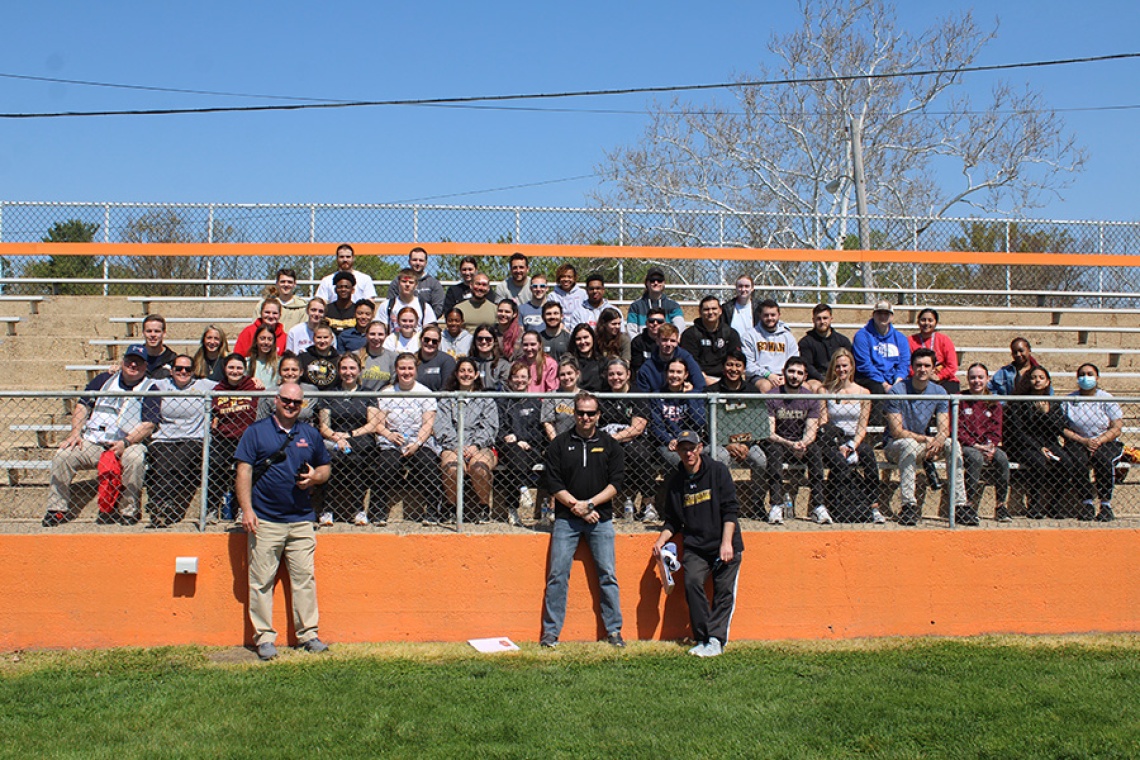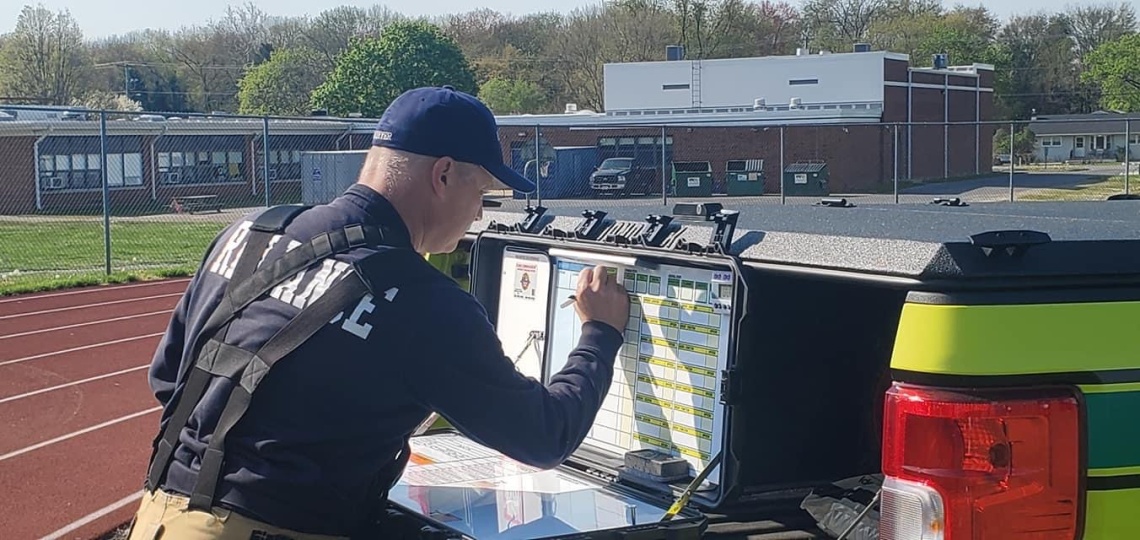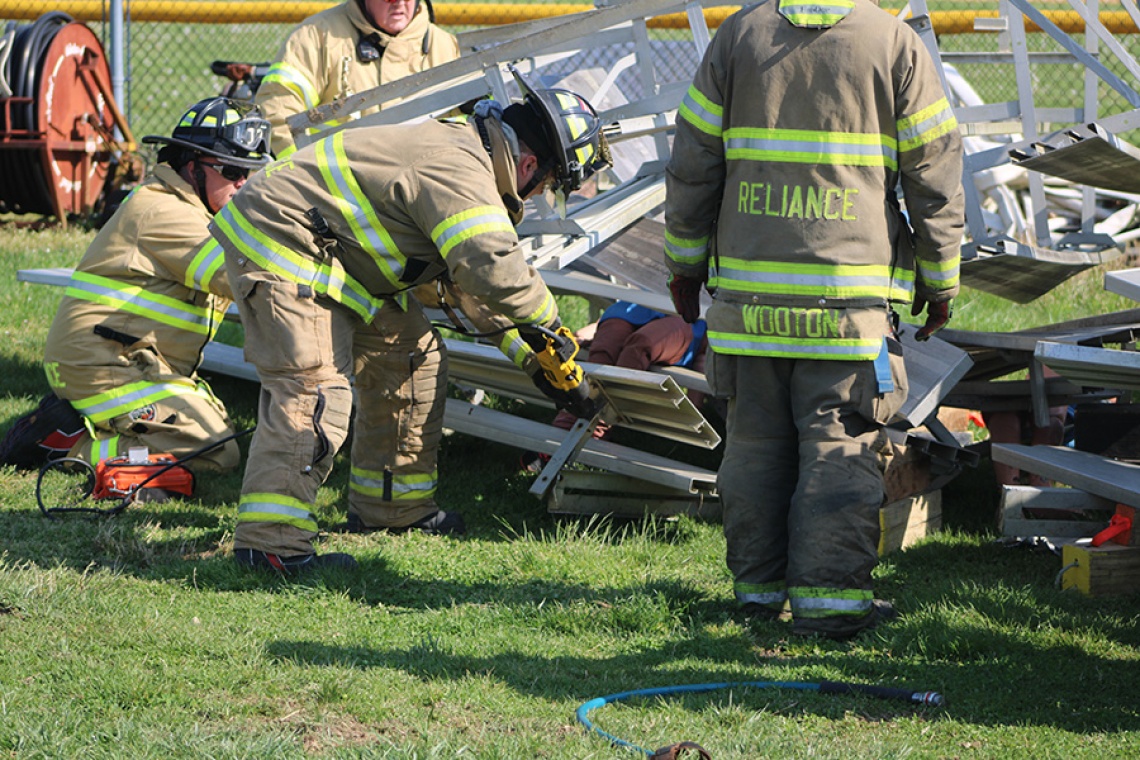
By Daniel J. Evans, MEd, ATC, and Douglas Mann, DPE, ATC
Athletic trainers today are required to be prepared for a wide range of emergencies that may occur during their coverage of athletic events. Recent events nationwide have increased the need to analyze how we as a profession can be better prepared to handle these events. We have all spent time creating, reviewing and practicing our venue-specific emergency action plans, but are we prepared for a mass casualty incident?
Having read the NATA News article “An Inter-Professional Approach to Planning and Executing a Mass Casualty Simulation” from October 2018, in which an athletic trainer simulates a mass casualty scenario in a theater, we asked could we apply the knowledge that they gained from their exercise to the secondary school setting today?
We were determined to try. A mass casualty incident is defined as one in which personnel and resources are overwhelmed by the number of patients involved, and that’s something athletic trainers should prepare to experience – it is a great educational and interactive experience.
In collaboration with the athletic and sports medicine departments at Woodstown High School, Rowan University’s athletic training program and local police and fire departments, we successfully simulated an emergency response to a bleacher collapse at a high school athletic event. More than 125 people participated and were assigned roles as medical providers, patients, spectators, athletic team members, first responders, controllers and evaluators.
During the exercise, the Rowan University athletic training students were asked to perform roles for which they had limited training and no practical experience. They not only engaged in the exercise, but performed well beyond expectations. We determined that adding incident command and triage training would be a valuable addition to any athletic training curriculum.
To plan and script our simulation, we utilized the Federal Emergency Management Agency (FEMA) template for exercise planning. This template is part of the Homeland Security Exercise and Evaluation Program that is found within the FEMA Preparedness Toolkit. With the template as a guide, the planners were able to create individual patient scripts along with controller and evaluator guides.
Identifying the main objectives of the simulation was an important part of recruiting who would be involved. We determined that we would focus on emergency action plan response, incident command, medical response, fire department response and police/security response. Ultimately, the participants included representatives from the school district and administration, local fire and police departments, the local emergency management office, local air medical services, emergency medical services and the Rowan University athletic training students.
Before diving into the simulation, it was decided to conduct a “tabletop exercise” one month prior to the field exercise. FEMA defines a tabletop exercise as “discussion-based sessions in which key personnel assigned emergency management roles and responsibilities meet in an informal setting to discuss their roles during an emergency and their responses to a hypothetical, simulated emergency.”
All of the leaders from the involved organizations, including athletic trainers, coaches, administrators and local first responders, attended the tabletop exercise that focused on a bleacher collapse during a basketball game. This allowed the group to work through a similar scenario, but not take away from the actual field exercise that would happen in-person. Information gathered from the interagency discussion at the tabletop exercise was applied to the final planning for the field exercise.
The primary objectives of the field exercise were to test the school and medical team response during a mass casualty incident. Before running the exercise, we prepared and organized response teams who would be involved and coordinated the exercise setting.
We identified four distinct locations for patient care/triage, a unified command center, athletic team management and fire department response on the high school campus. These and other areas were assigned a controller, who controlled the pace of the exercise and prompted the participants when necessary to keep the exercise on track. Controllers were assigned to each triage tarp, the athletic team and the medical team.
The first location for the exercise was the simulated collapse zone that contained 34 patients. This area called for the response of medical personnel, which included nine medical personnel: physician, two athletic trainers, four athletic training students and two emergency medical technicians. This group responded to the patients who were assigned a color as part of the script that indicated their medical need: green (walking wounded/minor), yellow (delayed) and red (immediate). After the initial collapse was simulated, patients were assessed and transported to the triage tarp area for further treatment and transport.
The second location was the unified command center (UC). FEMA defines the UC as a “system used during incidents involving multiple jurisdictions, a single jurisdiction with multi agency involvement or multiple jurisdictions with multi-agency involvement, unified command allows agencies with different legal, geographic and functional authorities and responsibilities to work together effectively without affecting individual agency authority, responsibility or accountability.”

In our field exercise, the UC brought together representatives from each organization involved and solved the problem of interagency communication. The UC ordered additional resources, accounted for patient numbers and classifications, tracked patient transport and assured that coverage was provided for the immediate response area in case of additional emergencies.
The third location, the athletic team management area, included the home football team and coaches. The team was simulated by 20 participants and two members of the coaching staff. At the onset of the exercise, the team members were instructed to run towards the collapse and create chaos. During this chaos, four members of the team were instructed to hide in various locations. The coaches worked to gain control of the team and move them to a predetermined safe location.
Once in that location, their controller provided them with prearranged rosters in order to perform accountability. It was determined that four students were missing and this information was relayed to the athletic director in the unified command center. Security was dispatched to locate the missing students and return them to the team location. At approximately the halfway point of the exercise one of the team members was scripted to suffer a medical emergency. The coaching staff again contacted the unified command to report this incident and request a response.
The fourth location was the fire department response, which was organized into two distinct areas. The first area consisted of a rubble pile, which was constructed from aluminum bleachers that the school district had designated for disposal. Four sections of bleachers were crushed with five rescue mannequins trapped within them. This provided the firefighters with a real-life training prop for the practice of stabilization and extrication techniques.

In addition to the rubble pile, the fire department oversaw the medevac helicopter landing zone. We prearranged to have local air medical services arrive at about the halfway point of the exercise. The landing zone was established on an adjacent athletic field. At the conclusion of the exercise, participants were able to visit the flight crew at the landing zone and learn more about their function during an emergency.
During the extrication process, command was notified by county dispatch that a motor vehicle crash had occurred at the entrance to the stadium area. Because of this, the access point for additional ambulances was blocked. Although this was a completely scripted event that only occurred through radio transmissions, it added another obstacle that had to be handled within the unified command center.
In addition to the areas outlined above, there was a group of participants that played the role of spectators at the game. One of the spectators was scripted to act in a passive aggressive manner and repeatedly attempted to enter the collapse area. Another participant was scripted to act dazed, confused and unsure of where they are. This person was scripted to wander into the team’s designated area and created an issue for the coaching staff. All of the spectators required a crowd control response from the police/security officers.
Finally, there was a dedicated observer area that was hosted by a former athletic director. They had a dedicated portable radio and access to the scripts for each area. They were able to listen to all radio transmissions throughout the exercise and the host was able to answer any questions that arose.
The tabletop exercise done prior to the mass casualty drill proved invaluable as a planning tool for the field exercise. It helped reveal the necessity of a unified command center at large events.
With the need to transport a large number of patients identified as green, a discussion during the tabletop exercise led to the use of the visiting school bus to transport this group to the emergency department. This proved useful during the field exercise for patient transport and care.
Following the mass casualty simulation, a debriefing session was conducted at the site. This session identified the need for National Incident Management System training for school district personnel, triage training for onsite medical personnel, addition of trauma-related equipment for the athletic venue, well-defined crowd control procedures and scripted messages available for the public address announcer.





